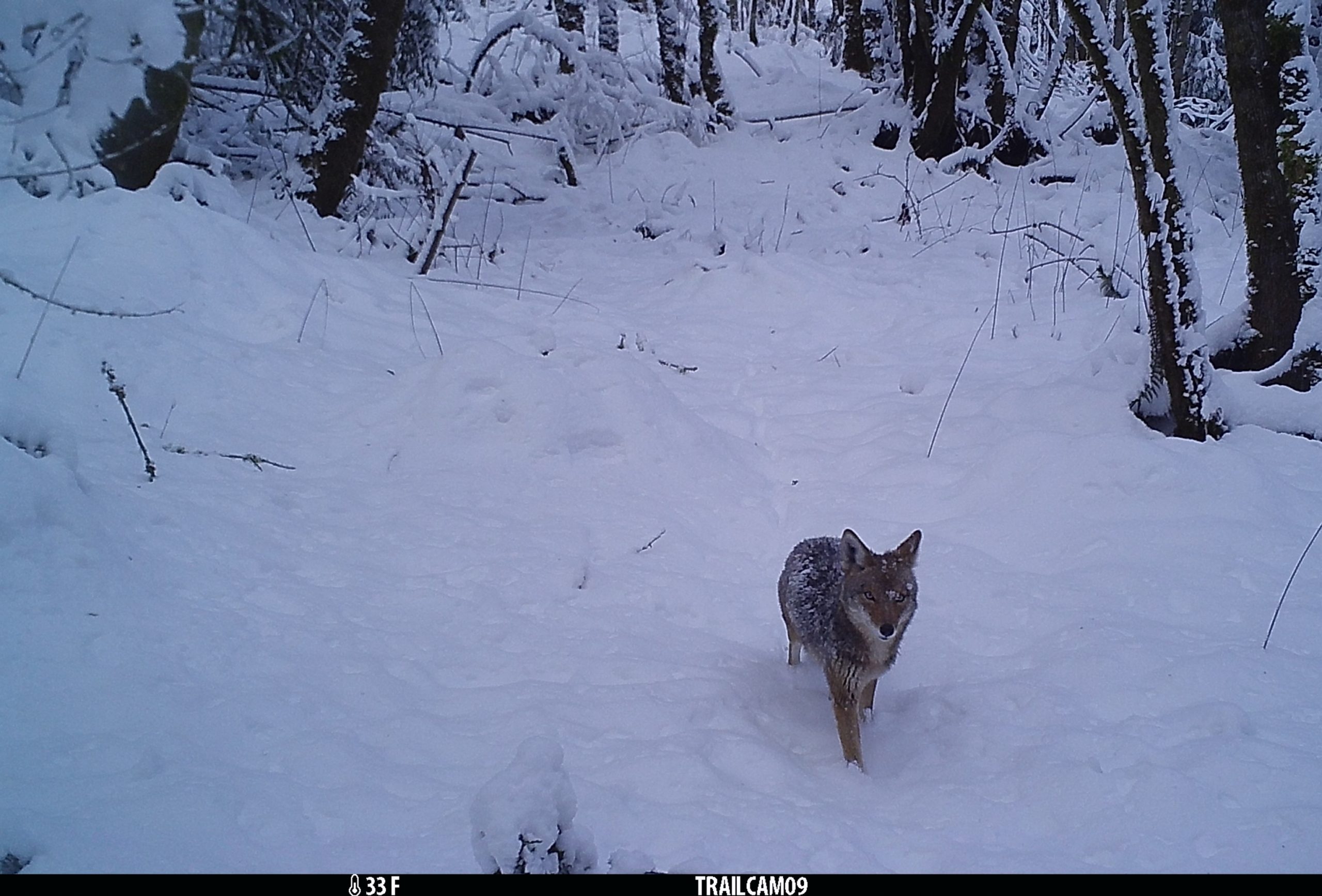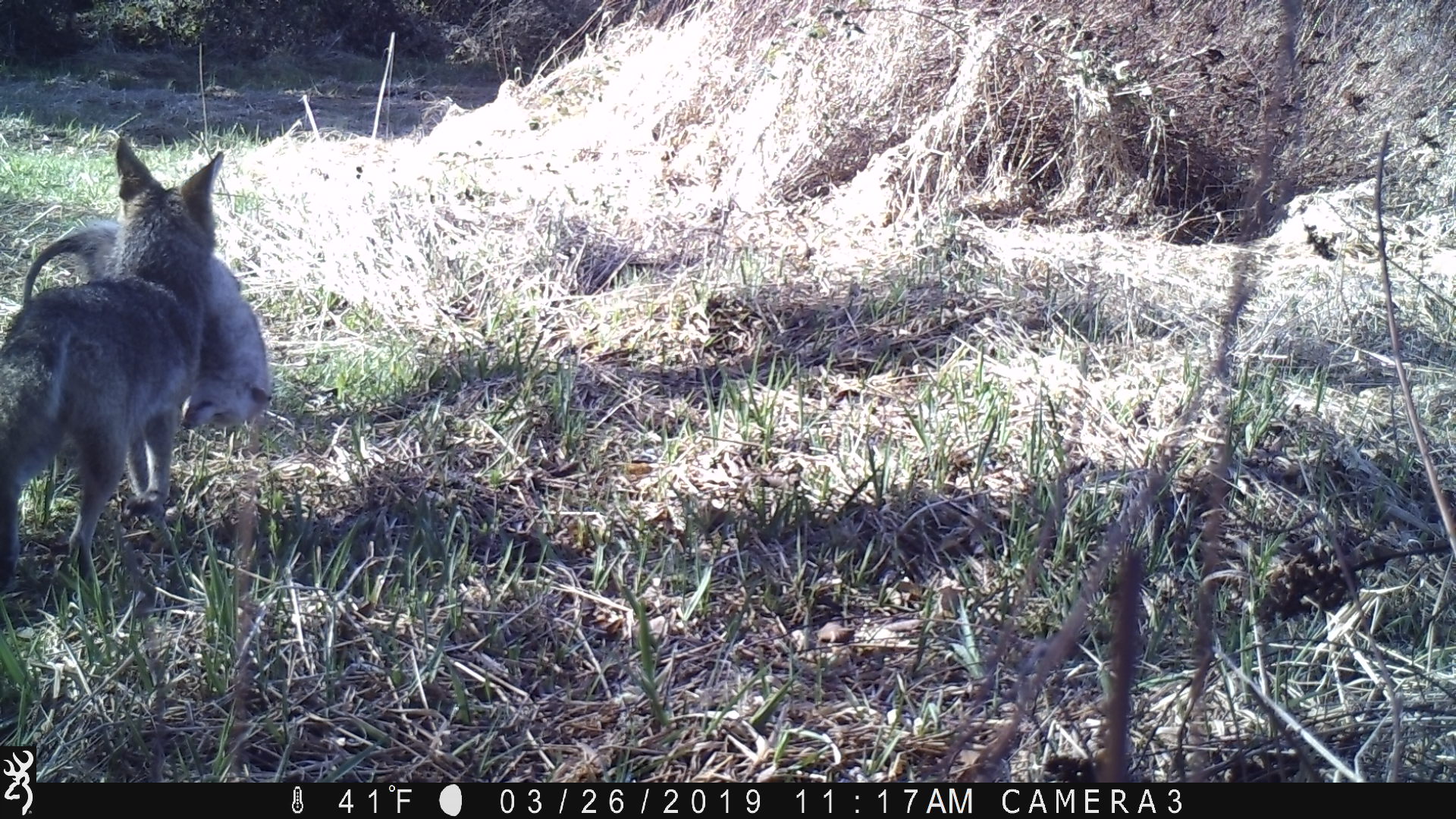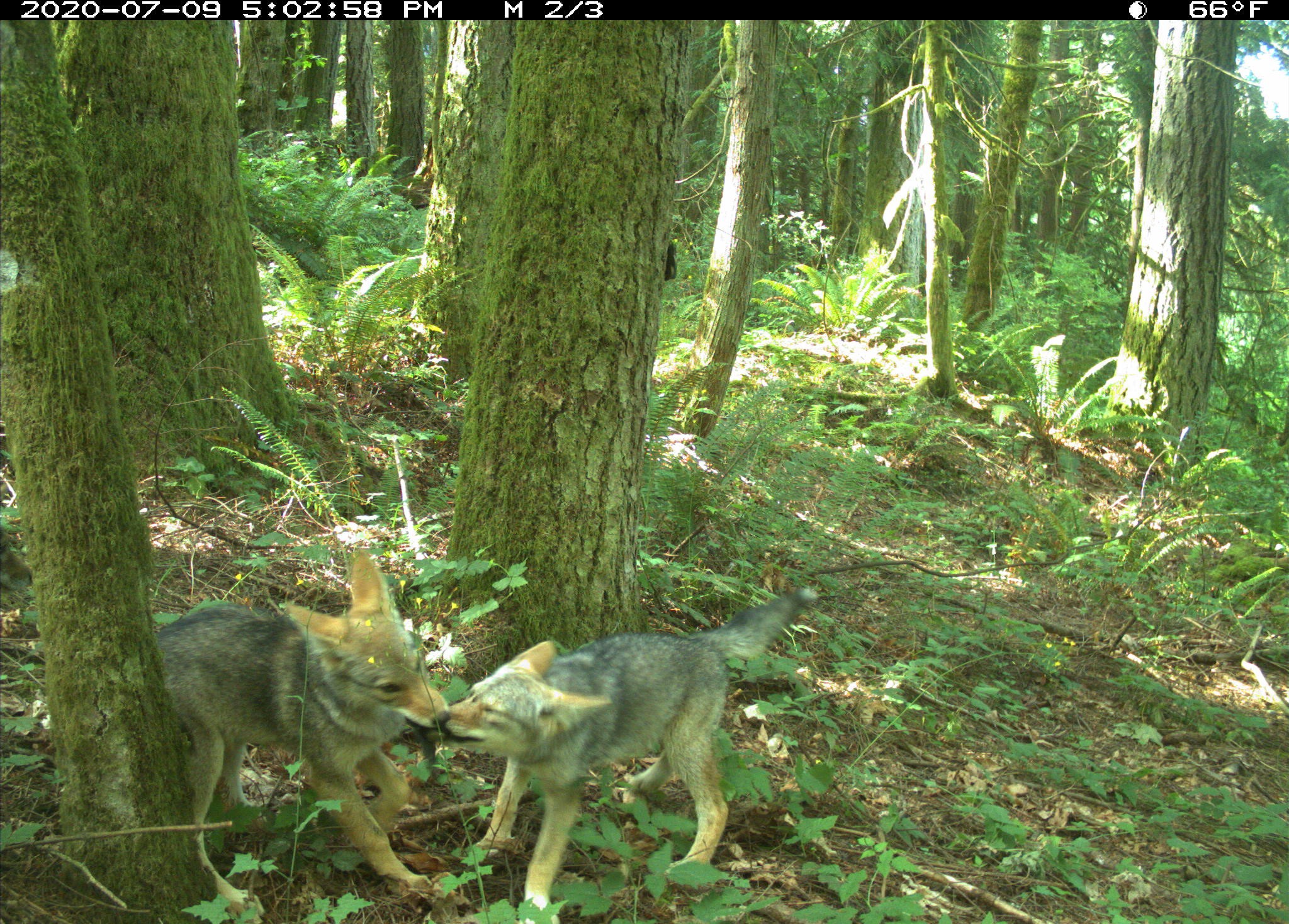Species Spotlight: Coyote (Canis latrans)
“The wolf we tried to erase but ended up in our backyard.” – Dan Flores, author of Coyote America.

A snowy coyote stares at our camera trap located in the Wildlife Corridor.
For most of us, coyotes are more often seen than heard with their howling and yips echoing through the night skies. In fact, their Latin name, Canis latrans, can be translated to “barking dog.” These incredibly intelligent creatures use about a dozen different vocalizations to communicate with each other.
One of the most resilient carnivores in North America, the coyote is one of the species often captured in the photos collected by our remote wildlife cameras. Coyotes belong to the genus Canis, which also includes the gray wolves that used to roam most of this continent. Now, there are 19 subspecies of coyote that can be found in almost every ecosystem in North America. So why have coyotes been able to thrive? To put it simply, the coyote specializes in adaptability.

Back in 2019, one of our cameras snapped this photo of a coyote making a meal of a large opossum!
While most wild animals tend to stick to natural landscapes, coyotes can live in suburban and urban habitats. Bainbridge Island Land Trust volunteers help monitor coyote activity on the Island through the Seattle Urban Carnivore Project. This project, launched by Woodland Park Zoo and Seattle University in 2019, studies how carnivores like coyotes, raccoons, otters, and bears live and interact with people in such landscapes in an effort to support our coexistence.
Community science is critical to this project. Teams of volunteers regularly check and maintain motion-activated “camera traps” that remotely capture photos of animals passing through. These photos are used to gather data about how these carnivores use these spaces. According to the Carnivore Spotter Annual Report from August 2019 to July 2020 published by the project, coyotes were the most commonly reported species!

Two coyote pups fight over a lure stolen from our camera.
